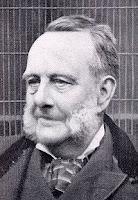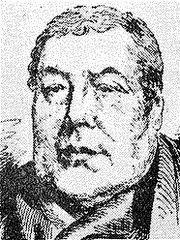Planning worship?
Check out our sister site, ZeteoSearch.org,
for 20+ additional resources related to your search.
- |
User Links
Search Results
Earth to earth and dust to dust, Lord, we own the sentence just
Author: John Hampden Gurney Appears in 18 hymnals
Earth to earth and dust to dust, Lord, we own the sentence just
GETHSEMANE
Appears in 471 hymnals Composer and/or Arranger: Richard Redhead Tune Key: D Major Incipit: 11234 43112 32211 Used With Text: Earth to earth and dust to dust
GETHSEMANE
Earth to earth and dust to dust, Lord, we own the sentence just
Author: John Hampden Gurney Hymnal: The Book of Praise #d66 (1865)
Earth to earth and dust to dust, Lord, we own the sentence just
Earth to earth and dust to dust, Lord, we own the sentence just
Author: John Hampden Gurney Hymnal: The Christian Psalmist (Numeral ed.) 10th ed., 1st rev. ed. #d81 (1851)
Earth to earth and dust to dust, Lord, we own the sentence just
Earth to earth and dust to dust, Lord, we own the sentence just
Author: John Hampden Gurney Hymnal: The Service of Song for Baptist Churches #d114 (1876)
Earth to earth and dust to dust, Lord, we own the sentence just
Anonymous
Person Name: Anon. Author of "Earth to earth and dust to dust" in The Seventh-Day Adventist Hymn and Tune Book In some hymnals, the editors noted that a hymn's author is unknown to them, and so this artificial "person" entry is used to reflect that fact. Obviously, the hymns attributed to "Author Unknown" "Unknown" or "Anonymous" could have been written by many people over a span of many centuries.
Anonymous
Richard Redhead

1820 - 1901 Composer of "GETHSEMANE" in The Seventh-Day Adventist Hymn and Tune Book Richard Redhead (b. Harrow, Middlesex, England, 1820; d. Hellingley, Sussex, England, 1901) was a chorister at Magdalen College, Oxford. At age nineteen he was invited to become organist at Margaret Chapel (later All Saints Church), London. Greatly influencing the musical tradition of the church, he remained in that position for twenty-five years as organist and an excellent trainer of the boys' choirs. Redhead and the church's rector, Frederick Oakeley, were strongly committed to the Oxford Movement, which favored the introduction of Roman elements into Anglican worship. Together they produced the first Anglican plainsong psalter, Laudes Diurnae (1843). Redhead spent the latter part of his career as organist at St. Mary Magdalene Church in Paddington (1864-1894).
Bert Polman
Richard Redhead
Samuel Webbe

1740 - 1816 Composer of "WÄHRING" in The Scottish Hymnal Samuel Webbe (the elder; b. London, England, 1740; d. London, 1816) Webbe's father died soon after Samuel was born without providing financial security for the family. Thus Webbe received little education and was apprenticed to a cabinetmaker at the age of eleven. However, he was determined to study and taught himself Latin, Greek, Hebrew, French, German, and Italian while working on his apprenticeship. He also worked as a music copyist and received musical training from Carl Barbant, organist at the Bavarian Embassy. Restricted at this time in England, Roman Catholic worship was freely permitted in the foreign embassies. Because Webbe was Roman Catholic, he became organist at the Portuguese Chapel and later at the Sardinian and Spanish chapels in their respective embassies. He wrote much music for Roman Catholic services and composed hymn tunes, motets, and madrigals. Webbe is considered an outstanding composer of glees and catches, as is evident in his nine published collections of these smaller choral works. He also published A Collection of Sacred Music (c. 1790), A Collection of Masses for Small Choirs (1792), and, with his son Samuel (the younger), Antiphons in Six Books of Anthems (1818).
Bert Polman
Samuel Webbe


 My Starred Hymns
My Starred Hymns


